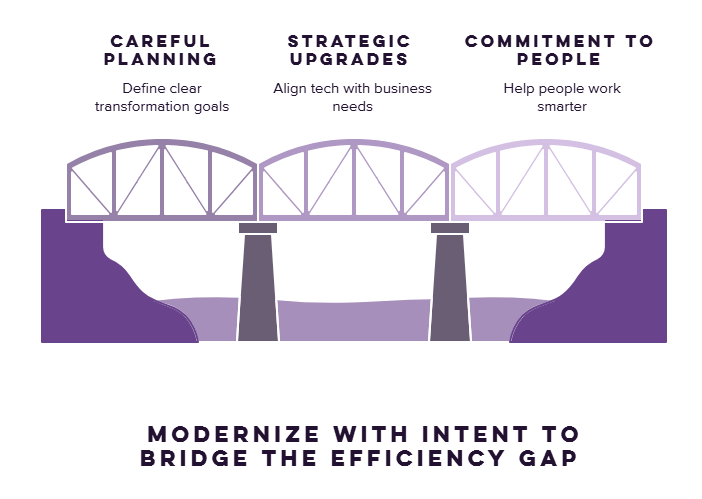GPT-5.1: What the Update Really Means, and Why Two Models Are Back
- Synergy Team

- Nov 17
- 3 min read

At Synergy, we talk a lot about how AI strategy evolves as organizations mature. GPT-5.1 is a perfect example of that shift in real time.
Earlier in the GPT-5 roadmap, OpenAI envisioned a single, unified model capable of handling everything: deep reasoning, multimodal analysis, content creation, orchestrating workflows, and even agent-style task execution. It was a compelling idea — one model powering every layer of intelligence across the enterprise.
But GPT-5.1 marks a meaningful philosophical turn. Instead of trying to make one model do everything, OpenAI has reintroduced a two-model structure:
one optimized for depth, stability, and accuracy,
and one designed for speed, cost efficiency, and high-volume tasks.
It’s a pragmatic course correction — and one that mirrors how organizations actually use AI today. Businesses increasingly need both fast, inexpensive responses for day-to-day operational volume, and high-precision reasoning for more nuanced, strategic work.
No single model can deliver both optimally without compromise. GPT-5.1’s split acknowledges that reality and gives teams better lanes for designing, scaling, and budgeting their AI workloads.
What’s New in GPT-5.1
Though labeled as a “.1” update, GPT-5.1 represents more than a minor patch. The biggest improvements sit in the areas that matter most for enterprise adoption: stability, predictability, and dependable performance.
1. Better reasoning stability
GPT-5.1 is noticeably stronger at holding structure, following constraints, and completing multi-step logic without drifting. That reduces “creative detours” in tasks like:
drafting policy language
summarizing contracts
assembling structured plans
writing repeatable documentation
In other words: fewer surprises in places where accuracy matters.
2. More reliable tool use and workflow execution
Earlier models could call tools — GPT-5.1 is simply more deliberate and consistent when orchestrating multi-step sequences. This matters for organizations exploring:
automations
digital worker scenarios
workflow orchestration
task delegation through APIs
It’s a step toward treating AI as a system participant, not just a conversational interface.
3. Stronger multimodal understanding
GPT-5.1 interprets dashboards, screenshots, forms, and diagrams with clearer context. This turns multimodal input into a practical capability, unlocking workflows like:
dashboard validation
screenshot-based triage
visual reporting
interpreting exports and structured documents
4. Improved long-context performance
GPT-5.1 can manage and synthesize large volumes of information with fewer drops in quality — an important change for organizations with large policy libraries, intranets, or historical project archives. This cuts down on workarounds and reduces the need for hyper-specific prompt engineering.
Why Returning to Two Models Makes Practical Sense
Reintroducing two models isn’t a step backward — it’s a reflection of how AI is actually used in the enterprise. Most organizations fall into two buckets of need: high-volume operational tasks, and high-stakes analytical tasks.
High-volume operational tasks can include:
customer comms
ticket triage
documentation
content drafting
internal Q&A
These require speed and cost efficiency, not premium reasoning.
High-stakes analytical tasks can include:
strategy insight
legal or compliance reviews
financial modeling
planning
complex multi-step reasoning
These require depth, context, and predictability.
Trying to optimize a single model for both forces unnecessary trade-offs. Two models allow for:
Predictable workloads — each model optimized for its lane
Cost discipline — don’t pay premium prices for simple tasks
Simpler architecture — mapping the right model to the right workflow
Cleaner scaling — without inflating usage budgets
This follows the same trajectory cloud infrastructure took years ago: not all workloads belong on the highest-performance tier.
Is GPT-5.1 a Major Leap — or an Incremental Step?
It depends on what you measure.
As a purely “smarter” model? GPT-5.1 is more of a refinement than a generational leap.
As a dependable, operationally trustworthy system? It’s a significant step forward.
Where earlier models impressed with intelligence but struggled with consistency, GPT-5.1 focuses on reliability, a shift that matters more for organizations moving from experimentation to scale.
For enterprises, stability is the breakthrough. Predictability is what unlocks real adoption.
Synergy’s Perspective on GPT-5.1
From where we sit, GPT-5.1 accelerates the industry’s shift toward practical, operational AI.
The model’s improvements — stronger reasoning, clearer multimodal output, more consistent tool use, and the return to a purposeful two-model architecture — make it easier for organizations to embed AI into real workflows without fear of unpredictability.
The headline isn’t “GPT-5.1 is smarter.” The headline is “GPT-5.1 is more trustworthy.”
That distinction is what determines whether teams feel comfortable relying on AI for automation, knowledge workflows, intranet intelligence, ticketing modernization, operational support, strategic decision-making, or any other daily routine tasks.
If you’re exploring how GPT-5.1 fits into your AI roadmap — whether you’re scaling pilots or modernizing key business systems — we’re here to help you navigate the next phase with clarity and confidence.





Comments